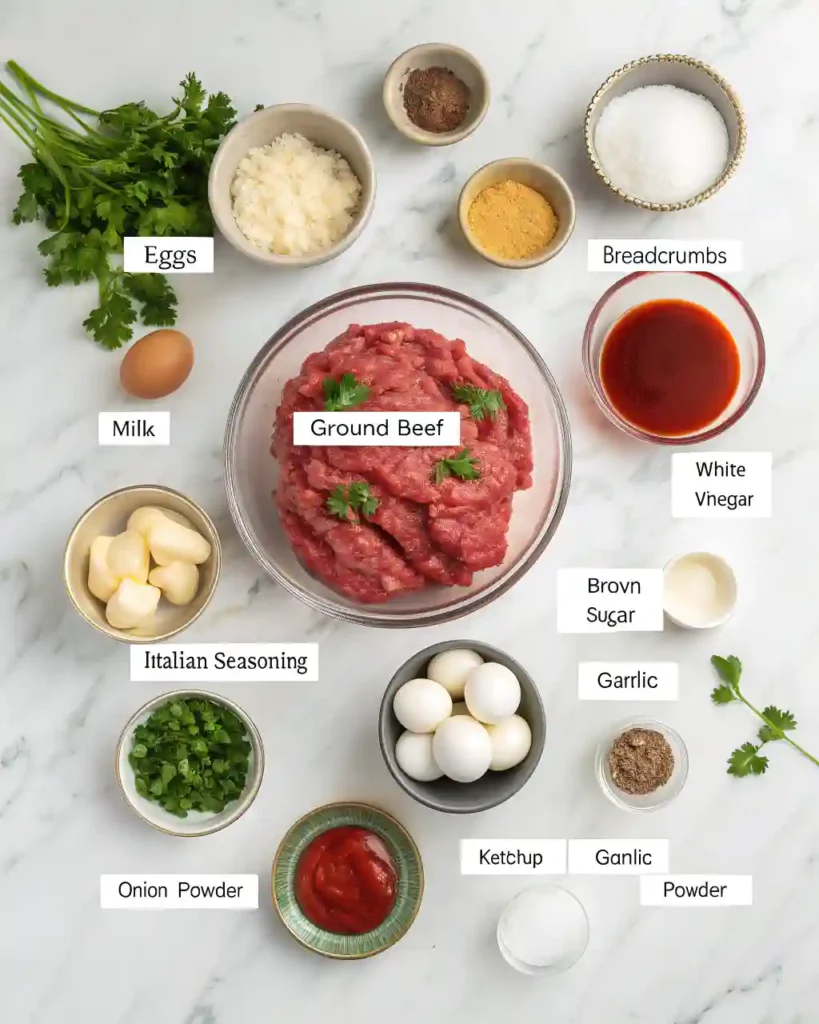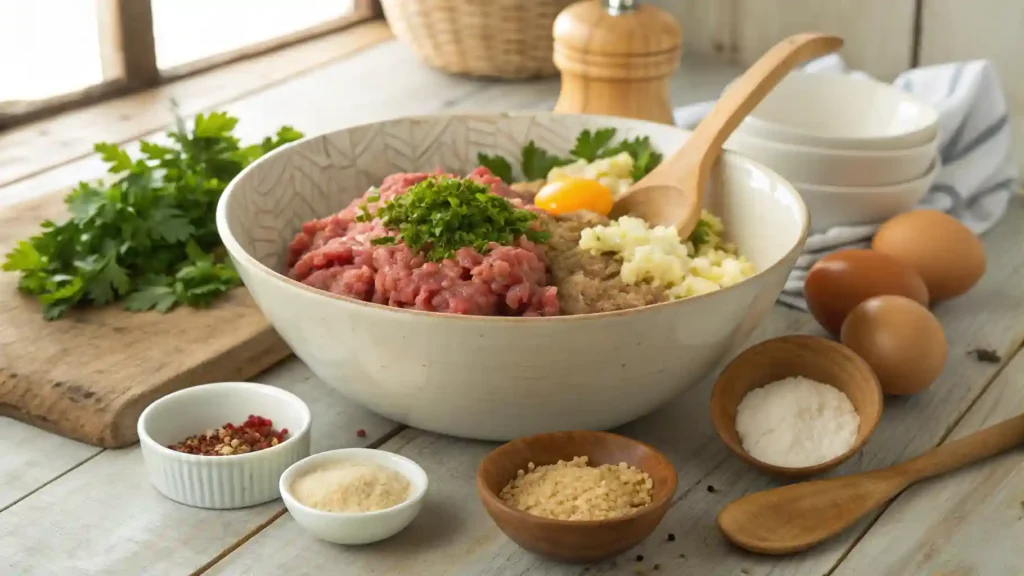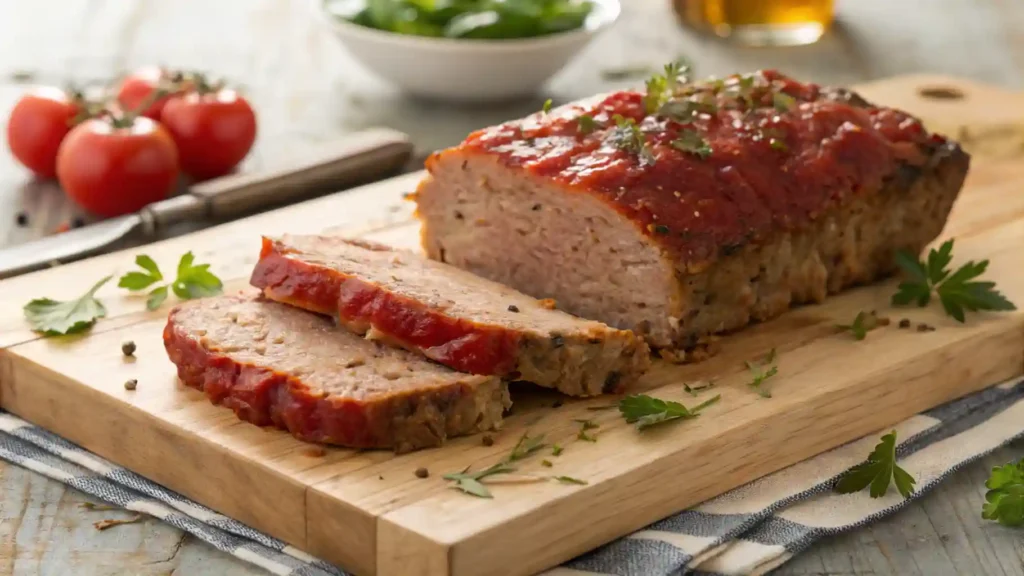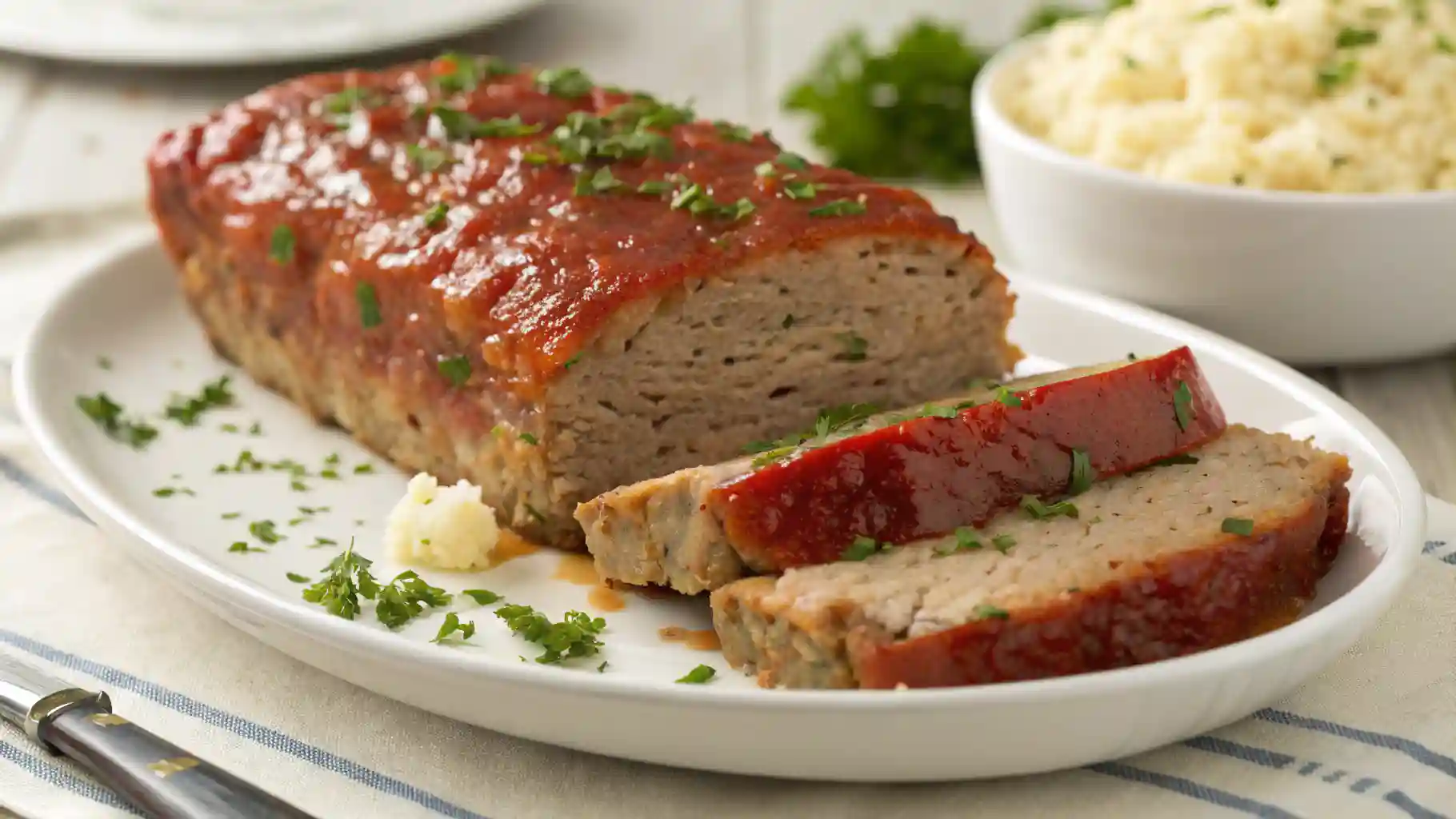Few dishes embody the spirit of home-cooked comfort food like a classic meatloaf recipe. With its tender interior, flavorful glaze, and nostalgic charm, meatloaf has secured its place as a beloved dinner staple across generations. This dish isn’t just about flavor it’s about family gatherings, warm kitchens, and recipes passed down through the years.
Table of Contents
In this guide, we’ll walk you through everything you need to know about making the perfect meatloaf. From its fascinating history to a step-by-step recipe, pro cooking tips, tasty variations, and storage hacks, this article covers it all.
Whether you’re cooking for a weeknight family dinner or a special occasion, this recipe guarantees juicy, flavorful results every single time.
The History of Meatloaf
Origins in Europe
Meatloaf’s roots trace back to ancient Europe, where minced meats and grains were combined to stretch meals and reduce waste. In Germany, dishes like Falscher Hase (false hare) showcased early versions of meatloaf, often shaped to resemble roasted rabbit.
American Adaptation
When immigrants brought their culinary traditions to the United States, meatloaf took on a new life. During the Great Depression, it became a thrifty meal, stretching small amounts of meat with fillers like oats and breadcrumbs.
Meatloaf in Modern Cuisine
Today, meatloaf is more than just a budget-friendly dish. It’s been reinvented by chefs, featured on restaurant menus, and loved as a versatile comfort food that can adapt to a variety of flavors and dietary needs.
Why This Classic Meatloaf Recipe Stands Out
Flavor Profile and Texture
A truly great meatloaf strikes the perfect balance—juicy inside, slightly crispy outside, with a glaze that adds tangy sweetness.
Family-Friendly and Versatile
This dish works well for family dinners, potlucks, and even meal prepping. Leftovers make delicious sandwiches, too, making it a practical yet indulgent recipe.
Key Ingredients for the Perfect Meatloaf

Ground Beef Selection
Opt for ground beef with a little fat—ideally 80/20 or 85/15. Leaner meat can make the loaf dry, while fattier blends may cause it to fall apart.
Binding Agents: Eggs and Breadcrumbs
Eggs help hold everything together, while breadcrumbs absorb juices, preventing the loaf from crumbling.
Seasonings and Spices
Onions, garlic, parsley, salt, pepper, and Worcestershire sauce are staples. Some cooks also add a dash of paprika or mustard powder for depth.
Glaze Ingredients
A mix of ketchup, brown sugar, and a splash of vinegar creates the perfect sweet-and-tangy glaze.
Step-by-Step Classic Meatloaf Recipe
Preparing the Meat Mixture
Combine ground beef, breadcrumbs, eggs, finely chopped onions, garlic, milk, Worcestershire sauce, and seasonings in a large bowl. Gently mix until just combined.
Shaping the Loaf
Form the mixture into a loaf shape on a baking sheet or place it in a loaf pan.
Baking Instructions
Preheat oven to 350°F (175°C). Bake for about 50–60 minutes, depending on loaf size.
Adding the Glaze
In the last 15 minutes of baking, spread the glaze evenly over the top. This caramelizes beautifully while keeping the meat moist.
Resting and Slicing
Allow the meatloaf to rest for 10 minutes before slicing. This step locks in juices and prevents it from falling apart.
Pro Tips for a Juicy Meatloaf
Avoid Overmixing
One of the most common mistakes home cooks make is overmixing the meat mixture. When the ingredients are combined too aggressively, the proteins tighten up, resulting in a dense and tough loaf. Instead, mix gently with clean hands or a fork until the ingredients just come together.
Letting the Meatloaf Rest
Patience is key. Once the meatloaf comes out of the oven, resist the urge to slice it right away. Letting it rest for about 10 minutes allows the juices to redistribute, ensuring every slice is moist and flavorful.
Using a Meat Thermometer
To guarantee doneness without overcooking, use a meat thermometer. The internal temperature should reach 160°F (71°C) for beef. This ensures food safety while keeping the loaf tender and juicy.
Delicious Variations of Meatloaf
Cheesy Meatloaf
Mix shredded cheddar or mozzarella into the meat mixture for gooey pockets of cheese in every bite. For a bolder flavor, use smoked gouda or pepper jack.
Bacon-Wrapped Meatloaf
Wrapping the loaf in bacon not only enhances flavor but also helps retain moisture. As the bacon crisps, it creates a savory, smoky crust.
Turkey or Chicken Meatloaf
For a lighter version, substitute ground turkey or chicken. These leaner options are healthier but can dry out easily, so consider adding extra moisture with grated vegetables like zucchini or carrots.
Vegetarian Meatloaf
Plant-based eaters don’t have to miss out. A vegetarian meatloaf can be made using lentils, mushrooms, or chickpeas, bound together with oats and flavored with spices and herbs.
Side Dishes to Serve with Classic Meatloaf
Mashed Potatoes
Creamy, buttery mashed potatoes are the ultimate comfort side, pairing perfectly with meatloaf’s savory richness.
Steamed Vegetables

Green beans, carrots, or broccoli add freshness and color to the plate, balancing the heaviness of the meatloaf.
Fresh Garden Salad
A crisp salad with a tangy vinaigrette offers a refreshing contrast, cleansing the palate between bites.
Garlic Bread
Warm, buttery garlic bread makes the meal even more indulgent and is perfect for soaking up extra glaze.
How to Store and Reheat Meatloaf
Refrigeration Tips
Store leftover meatloaf in an airtight container in the fridge for up to 4 days. Wrap slices individually for easy grab-and-go lunches.
Freezing Meatloaf
Meatloaf freezes exceptionally well. Wrap the entire loaf tightly in foil and freeze for up to 3 months. To freeze slices, layer parchment paper between them to prevent sticking.
Best Reheating Methods
For best results, reheat slices in the oven at 300°F (150°C) until warmed through. Avoid microwaving, as it can dry out the meat.
Common Mistakes to Avoid
Using Lean Meat Only
While lean meat may seem like a healthier option, it often results in a dry loaf. Stick to an 80/20 ratio for the best texture and flavor.
Skipping the Resting Time
Cutting too soon allows juices to escape, leaving your slices dry. Always let it rest before serving.
Overbaking the Meatloaf
Cooking past 160°F leads to dryness. Always rely on a thermometer rather than guessing based on time alone.
Nutritional Value of Classic Meatloaf
Calorie Breakdown
A standard serving of meatloaf (about 4 ounces) contains roughly 250–300 calories, depending on the fat content of the beef and glaze.
Protein and Carbohydrates
Packed with 18–20 grams of protein per serving, meatloaf is a satisfying main dish. Breadcrumbs and glaze add moderate carbohydrates.
Healthy Modifications
- Use whole-grain breadcrumbs instead of white.
- Add finely grated vegetables for extra fiber.
- Opt for lean turkey or chicken for fewer calories.
FAQs About Classic Meatloaf Recipe
Can I make meatloaf ahead of time?
Yes! You can assemble the loaf and refrigerate it for up to 24 hours before baking. Just cover it tightly to prevent drying.
Why does my meatloaf fall apart?
Usually, it’s due to insufficient binding agents. Make sure you include enough eggs and breadcrumbs to hold it together.
Should I cover meatloaf while baking?
Not always. Baking uncovered helps create a nice crust, but covering with foil for the first half of baking can prevent over-browning.
Can I use oatmeal instead of breadcrumbs?
Absolutely. Rolled oats are a great gluten-free alternative and add a wholesome texture
How do I prevent grease from pooling around the meatloaf?
Bake the loaf on a baking sheet lined with parchment rather than in a loaf pan. This allows excess fat to drain away.
What’s the best way to serve leftover meatloaf?
Try a meatloaf sandwich! Layer slices with cheese, lettuce, and a spread of mayo or mustard for a hearty lun
Conclusion: Bringing Comfort to the Table

The classic meatloaf recipe is more than just a dish it’s a tradition. From its European origins to its place in American kitchens, meatloaf continues to evolve while remaining a symbol of home-cooked comfort. With the right blend of meat, seasonings, and a perfect glaze, you can create a loaf that’s juicy, flavorful, and deeply satisfying.

The Best Meatloaf Recipe
Ingredients
Equipment
Method
- Preheat the oven to 375°F (190°C). Prepare a 9×4-inch loaf pan by lightly greasing or lining with parchment paper.
- In a large bowl, mix ground beef, diced onion, garlic, breadcrumbs, eggs, milk, ketchup, Worcestershire, Italian seasoning, salt, and pepper until just combined.
- Form the meat mixture into a loaf and place it into the prepared pan, pressing down gently to even it out.
- In a small bowl, combine ketchup, brown sugar, and apple cider vinegar. Spread evenly over the top of the meatloaf.
- Bake for 55–60 minutes, or until internal temperature reaches 160°F (71°C).
- Let rest for 10 minutes before slicing and serving. Enjoy!
Notes
Whether you stick with the classic or try one of the fun variations, this recipe ensures every slice brings warmth and nostalgia to your table. So, roll up your sleeves, preheat the oven, and get ready to enjoy the ultimate comfort food.